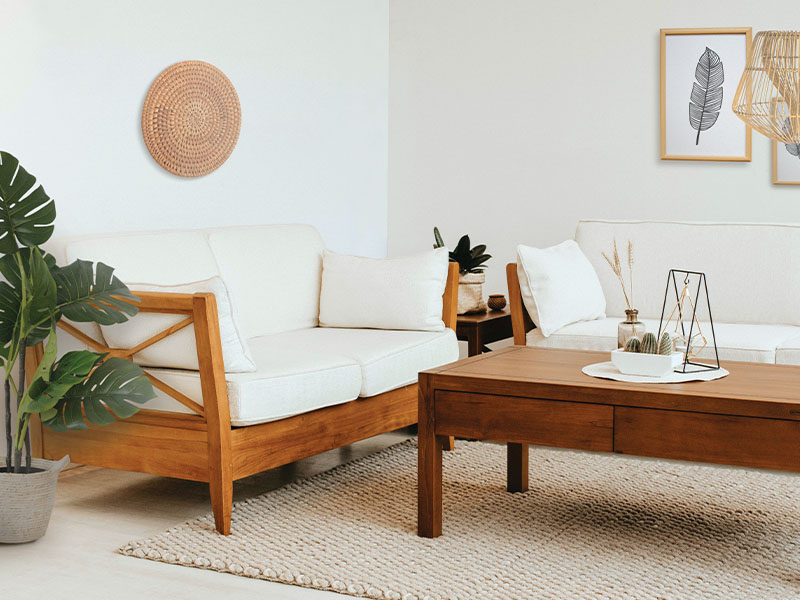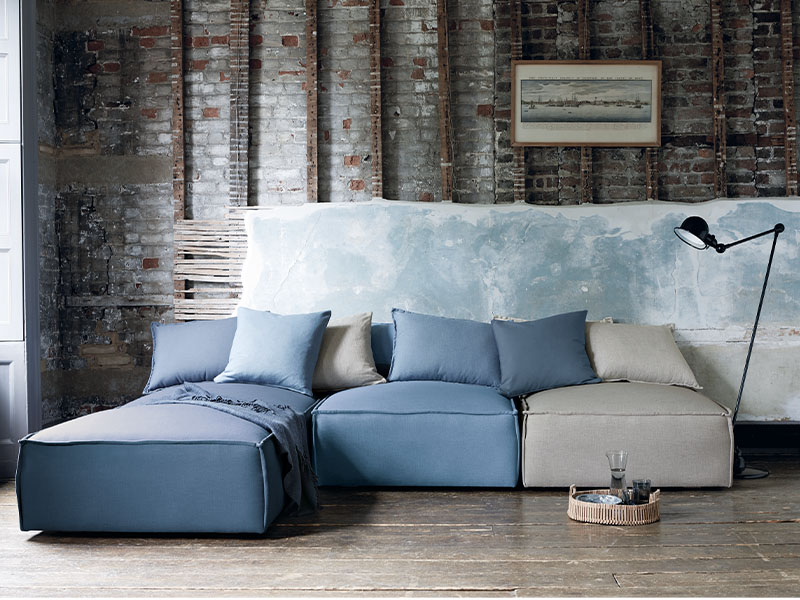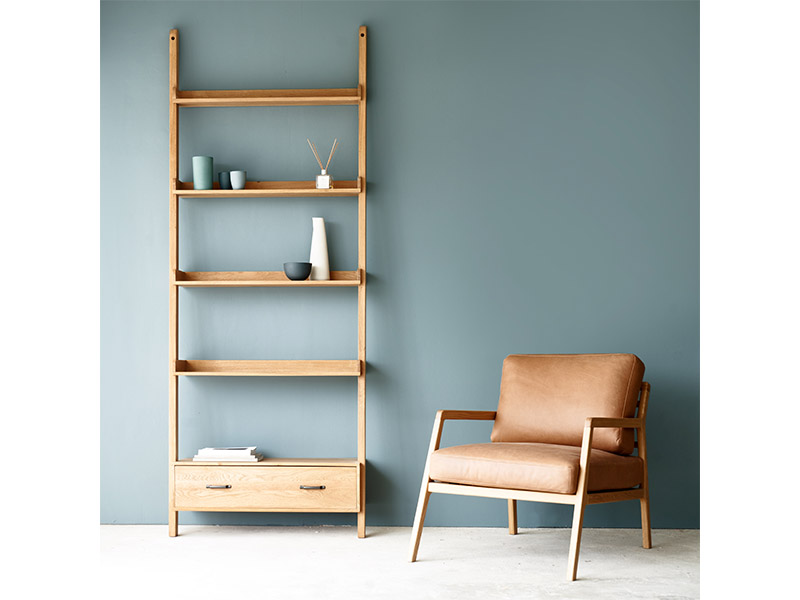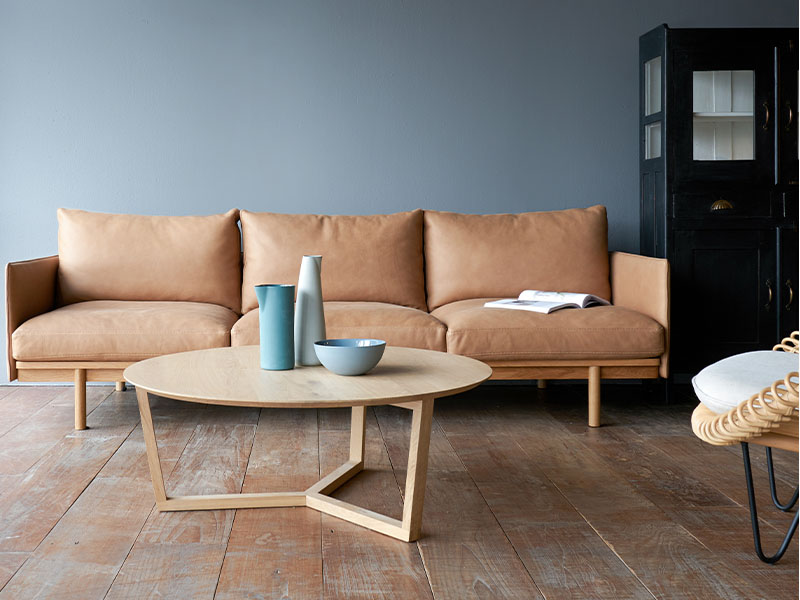Whether you’re on the market for a new sofa, or looking to reupholster, we help break down the fibre and match the right fabric to your needs.
A smart approach when selecting fabric for your sofa is to match it to your lifestyle first, then your budget. Your sofa’s lifespan – and therefore your return of investment – is very much determined by how suitable the sofa is for your situation. Those in one- or two-tenant households or whose sofa is in a low-traffic room such as a home office can often afford to opt for more delicate fabrics like velvet or silk. A household with children, pets or frequent guests will require a more resilient, durable and easy-to-clean fabric. We take a look at three popular fabrics and some smart alternatives.
Cotton fabric
Popular for its versatility, soft touch and easy care character, cotton is breathable and ideal for Singapore’s hot and humid climate. Cotton upholstered sofas usually come with removable covers that are machine-washable, making them a great choice for frequent spills and high-traffic areas like your living room.

A downside? Cotton is prone to wrinkles and isn’t very stain-resistant. If you’re looking for a more durable option, find a fabric that’s a majority cotton blend with a small percentage of synthetic fabric to keep its clean shape. For example, these classic designs from Scanteak use a mix of cotton, polyester and polypropylene. Polyester is less absorbent and retains its shape, making it more sturdy and stain-resistant. Meanwhile, the cotton component keeps the fabric more breathable compared to pure polyester products. Couple this with a solid wood, low-maintenance frame and you have a sofa that will withstand the elements.
Tip: Cotton absorbs dye very easily, so there’s a wide variety of colours and patterns available. If you’re looking for a kid- and stain-friendly upholstery, opt for a dark tone or pattern to mask the marks, like these options from Altfield Interiors.
Linen fabric
Though pricier than cotton, linen is the more sustainable choice. Made from flax, this natural fibre is more resilient and requires less maintenance. It also consumes far less water and doesn’t require chemical fertilisers or pesticides. Ideal for tropical climates, linen is breathable, lightweight and cool to the touch. It’s also hypoallergenic, so dust and pet hair won’t be problematic and provoke any allergies.

Unfortunately, linen is easily stained – and it wrinkles even more than cotton. The integrity of the fibre can also be weakened if exposed to direct sunlight. If you have your sights set on the classic look and touch of linen, centrepiecepiece furnishing carries a smart alternative. Cambay is a hard-wearing plain weave with a soft texture and look that’s akin to linen, only far more durable. Part of Villa Nova’s “EasyClean” range, the technology behind this fabric makes it more robust and stops dirt from penetrating the fabric fibre; that means tough stains like pen ink and food can be removed easily using just water and no detergents.
Tip: A densely-woven upholstery fabric will always hold up better than one that’s thinner or loosely woven. For a robust linen option, ask the store for assistance with heavyweight options, such as these from Altfield Interiors.

Leather fabric
Leather sofas can last for decades if cared for properly; the material is strong, durable and easily cleaned. Maintenance mostly requires a light dusting and occasional wipe down with a wet cloth, though you may want to consider investing in leather polish or softening products to keep it from cracking.
Though leather is more stain-resistant than fabric, it’s far more vulnerable to scratches. Fortunately, this often lends itself to the “perfectly imperfect” look that’s very sought after. A full-grain leather absorbs the impact of everyday life, from natural wear and body oils to minor scratches and creasing. This develops a patina or character over time, resulting in a fashionably worn-in look that only gets better with age.

The downside with quality leather is that it often comes with a premium price. Still, when you consider the longevity, it’s an investment worth looking into. Another factor is heat and humidity. Leather will always reflect the room or body temperature, so it’s ideal for a climate-controlled room; however, if your leather sofa is placed in an area without air-conditioning, you may find it to be hot and sticky. Alternatively, sofas like the full-grain aniline 3.5-seater from Originals are well suited to this climate. With no protective layer or coating on the surface, aniline requires more maintenance, but offers superior comfort with a supple and soft finish that can breathe and absorb moisture.
Tip: If you have young kids or pets that frequently hop onto your sofa, distressed leather is a great option; it has a more rugged and worn look that will better conceal blemishes and scratches. Altfield Interiors stocks several colours and varieties.

Other threads
Still looking? We break down the pros and cons of other natural fabrics on the market.
Silk
Though one of the most luxurious and expensive natural fibres, this fabric can stand the test of time with quality care.
Pros: Luxurious, soft and cooling, retains shape.
Cons: Expensive, delicate, easily stained, requires professional cleaning.
Velvet
Available in both natural and synthetic varieties, velvet is a luxurious woven choice for upholstery.
Pros: Soft, regal and available in a variety of rich colours.
Cons: Difficult to clean and maintain, expensive.
Wool/Tweed
Though eco-friendly and robust, wool and tweed are often better suited to cooler climates for their insulating properties.
Pros: Robust, flame-retardant, resistant to wrinkles and stains.
Cons: Expensive, often itchy, requires professional cleaning.
Viscose
Though made from wood pulp, this fabric undergoes a high-chemical manufacturing process that often renders it a synthetic, rather than a natural fabric.
Pros: Inexpensive, soft and lightweight, high colour retention.
Cons: Non-sustainable, weak and prone to stretching, requires professional cleaning
For more upholstery options and advice on selecting the right fabric : Reupholstery direct from workshop in Singapore @ 90305057 now.
If you are in Singapore and is in need of an update for your couch to these fabrics, then contact us. The usual cost for reupholster/upholstery will start from SGD $1200 and above for a 2 seater or SGD $680 and above for an armchair. If you custom made a sofa in Singapore, the price starts from $3400 onwards. Ask for over stocked fabrics and you may even get a better price. Whatapps photos of your sofa and size to (+65 90305057 , Vince ) you can speak directly to us or email: info(at)centrepiece.com.sg to discuss your order. We don’t have call centres or customer service departments, you speak directly to the people making your sofa. Restoring beauty and beyond – Reupholstery SGShop @: Centrepiece Lazada Find sales/clear stock @ : CarousellStay Connected centrepiece
Contact www.centrepiece.com.sg or email: info(at)centrepiece.com.sg
Note: If you are a new customer, and you need the upholster to do home visit, a SGD $50 will apply for upholstery services. This amount can be factor into the total cost if you subsequently accept the quote and use our services. For existing customers, first time on site consultation fees may be waived.




